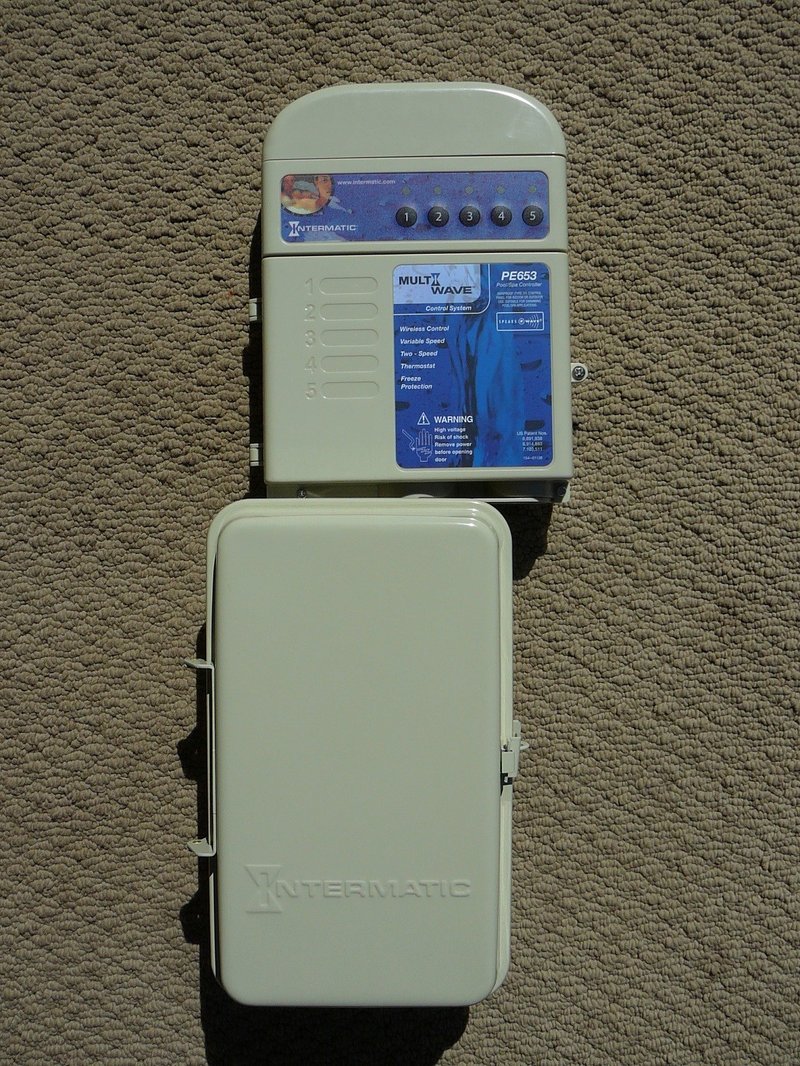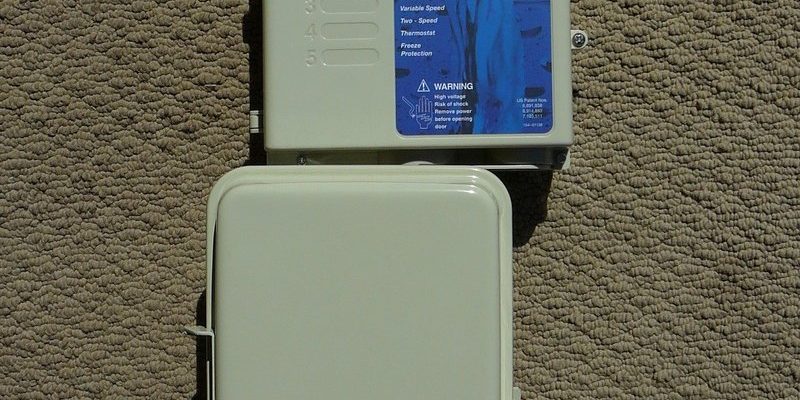
But here’s the thing: using an Intermatic pool remote from indoors isn’t quite as simple as using a TV clicker. There are a few quirks, technical details, and range issues to keep in mind. Let me explain what it looks like in real life, what types of Intermatic remotes are out there, and whether you can truly control your pool gear from inside the house—or if you’ll need to brave the backyard air after all.
Whether you’ve just unboxed your Intermatic remote or you’re daydreaming about more effortless poolside living, understanding how indoor control actually works can save you a lot of trial and error. Let’s break down the ins, outs, and what-ifs together.
How Do Intermatic Pool Remotes Work?
First, let’s talk about what an Intermatic pool remote actually does. Think of it as your pool’s personal command center, letting you turn on pumps, heaters, lights, and even switch between pool and spa mode—all without fiddling with the main pool panel outside. The remote communicates wirelessly (or via wired connections, depending on the model) with the pool’s control system, sending codes that tell it what to do.
Most modern Intermatic remotes use radio frequency (RF) signals to talk to a receiver near the pool equipment. Picture it like a walkie-talkie: your remote sends a signal, and the receiver “hears” it and makes the magic happen. Some setups, especially older ones, may use hardwired connections, but wireless is the norm for convenience.
Here’s the catch: just like your garage door opener, these remotes aren’t all-powerful. Their range depends on things like walls, distance, interference, and the strength of the signal. So, while it’s designed for outdoor pool use, that doesn’t always mean you’re stuck outside to control it—if the right conditions are met.
Indoor Use: What’s Possible With Intermatic Pool Remotes?
You might be wondering, “Can I really use my Intermatic pool remote from indoors, or is it just a sunny-day poolside gadget?” The answer is: sometimes yes, sometimes no. Let me walk you through why.
Many Intermatic pool remotes are technically capable of working from inside your house, but there’s a big asterisk: *signal range and interference*. The typical wireless range is around 100–300 feet in open air, but once you add walls—especially brick, stucco, or metal siding—the signal can weaken fast. If your pool equipment is just outside the living room, you might have great luck. But if it’s across the yard or you’re trying to control things from a basement or second floor, you may hit a wall (literally and figuratively).
Other things to consider include:
- Building materials: Concrete, steel, and brick soak up radio signals like a sponge absorbs water.
- Distance: The farther you are from the receiver, the weaker the signal gets.
- Interference: Wi-Fi, cordless phones, or even microwaves can scramble the remote’s code.
If your remote won’t work from inside, some models let you install a “repeater” or extra antenna to boost signal. Or you can try moving closer to an exterior window or door. In the real world, people often find their remotes work just fine from their kitchen or sunroom, but struggle from deeper indoors.
Types of Intermatic Remotes and Which Ones Work Indoors
Not all Intermatic pool remotes are created equal. Some are basic hand-held clickers, while others have touchscreen displays or even phone app integration. Your experience using the remote indoors will depend on the specific model you have.
- Handheld Wireless Remotes: These look a bit like chunky garage door openers. Models like the Intermatic PE953 are popular. They use RF signals, so their indoor range varies a lot; sometimes you’ll get lucky, sometimes you won’t.
- Wall-Mounted Keypads: These are meant to be installed inside your home—usually near the back door. They’re hardwired, so signal isn’t a problem, but installation is trickier and not all pool setups support them.
- Smartphone Integration: Newer Intermatic systems may allow you to connect via Wi-Fi or Bluetooth. This is the best bet for indoor use—if your system supports it, you can control your pool from anywhere there’s Wi-Fi!
If you’re not sure which remote you have, check for a model number on the back or inside the battery compartment. That’ll tell you what you’re working with and whether using it indoors is likely to be smooth sailing or more of a gamble.
Pairing, Syncing, and Common Troubleshooting Tips
Let’s say your Intermatic remote isn’t working from indoors—or stopped working altogether. Honestly, it happens more often than you’d think, and it can be frustrating. Here’s what to try before you start blaming the remote (or the pool robot).
- Sync or Pair the Remote: Sometimes, the remote and receiver lose their connection. Find the “Learn” or “Pair” button on the receiver box by your pool equipment, then follow the pairing instructions—usually it’s as simple as holding a button for a few seconds and then pressing a button on the remote.
- Check the Battery: It sounds obvious, but a weak or dead battery means weaker signals, even if the remote lights up.
- Reset the System: If all else fails, try a full reset. Turn off power to the pool receiver for a minute, then restart and re-sync the remote.
- Reduce Interference: Move away from large metal appliances or Wi-Fi routers while testing the remote indoors. Interference is sneaky and can block the RF code.
Here’s an insider tip: if your remote worked outdoors but not indoors, try using it near a window facing the pool. Sometimes even leaning out the door can make all the difference.
Real-World Use Cases: Why Indoor Control Matters
You might be asking, “Is it really worth the hassle to set up indoor pool remote control?” Here’s where I get a little opinionated: *absolutely*. Being able to control your pool system from inside saves time, keeps you comfortable, and lets you quickly react to changing weather or spur-of-the-moment plans.
Picture this: it’s pouring rain, and you want to warm up the spa for guests—but you don’t want to get soaked setting it up outside. Or maybe you want your pool lights on for an evening party, but forgot to switch them on earlier. Indoor remote access means you stay dry, warm, and in control.
If you host a lot, have kids or elderly relatives, or just like geeking out over home automation, getting your Intermatic pool remote to work from indoors is worth every bit of effort.
Alternatives: What If Your Intermatic Remote Doesn’t Work Indoors?
Sometimes, no matter what you try, your Intermatic remote just won’t cooperate from inside the house. Maybe the walls are too thick, or the distance is too far. Don’t sweat it—there are ways around it.
- Upgrade to a Wi-Fi Module: Many Intermatic systems can be retrofitted with a smart controller that links to your phone. This lets you use an app—no signal worries, no batteries, just Wi-Fi.
- Install a Wired Keypad: If you’re remodeling or building new, ask your electrician about running a control wire to a keypad inside. It’s a bigger project, but rock-solid reliable.
- Try a Universal Remote: Some third-party remotes play nice with multiple brands, sometimes offering stronger signals or antennas. Make sure to check compatibility first.
If you find yourself standing halfway out the back door just to get a signal, you’re not alone—this is classic pool-owner behavior! Sometimes, the simplest solution is the best: keep your remote by a window, or consider upgrading to something smarter.
Installation Tips: Getting the Best Indoor Range
If you’re setting up a new Intermatic pool remote system, a little planning can go a long way toward indoor control bliss. For wireless models, the *placement of the receiver (antenna)* is everything. The higher and more “in the clear” it is, the better the signal travels.
A few tips:
- Mount the receiver high up on an exterior wall, as close to the house as possible. Avoid putting it behind metal or dense stone.
- Aim the antenna toward the area of the house where you’ll be using the remote.
- Test before final installation: Temporarily place the receiver and try the remote from inside. If you get spotty results, adjust the location before screwing everything in.
- Consider a repeater if your house is extra large or you want coverage on both floors. Intermatic and third-party companies sell range extenders.
You might spend an extra half-hour fiddling with placement, but it’s worth it for reliable indoor pool control—and far better than discovering problems when guests are waiting for the hot tub.
Comparing Intermatic With Other Pool Remote Brands
Let’s zoom out for a second: is this an Intermatic-specific issue, or do all pool remotes have the same indoor struggles? Honestly, most wireless pool remotes—no matter the brand—deal with similar range and interference problems. Intermatic is known for solid build quality and straightforward controls, but it can’t break the laws of physics.
Other popular brands like Pentair and Hayward offer their own remotes, and some have better Wi-Fi or Bluetooth features built in. Sometimes their range is a little better, sometimes worse—but they’re all affected by house construction and signal obstacles.
If you’re deciding between brands or thinking about an upgrade, weigh these points:
- Intermatic: Reliable, easy to set up, affordable; older models are less “smart.”
- Pentair/Hayward: Often have slicker touchscreens or app integration, but may be pricier or trickier to pair.
- Universal remotes: Great if you manage multiple brands, but sometimes lose features or require more setup.
If indoor control is your top priority, look for modern systems with Wi-Fi or hardwired options. But for many people, getting an Intermatic pool remote to work from indoors is a simple enough fix with the right placement and a little patience.
Wrap-Up: Achieving Effortless Indoor Pool Control
So, can you use your Intermatic pool remote from indoors? In many cases—yes, especially if you pay attention to signal range, interference, and how your house is built. Sometimes you’ll need to get creative with placement, try a repeater, or upgrade to a smarter system. But the payoff—enjoying your pool or spa without braving the elements—is honestly priceless.
The bottom line? Indoor pool control is one of those “small joys” that ends up feeling like a luxury. With a little troubleshooting and the right setup, your Intermatic remote can become as much a part of your routine as your coffee maker or thermostat. And if you do run into trouble, remember: you’re just a few tweaks away from never dashing outside in your slippers again.
